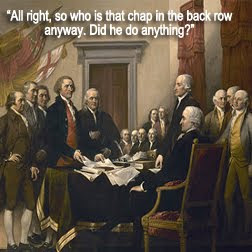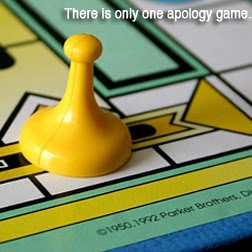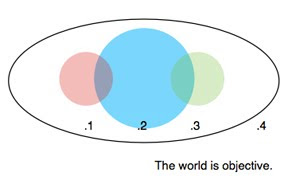
A few days ago,
Arik Hanson called it right. Anyone who looks up
David Mullen will find less social activity than they might have found a few years ago.
Does that mean David Mullen no longer understands digital marketing?Not at all. As Hanson points out, he has different responsibilities. And
tracking about 250 blogs, daily, for almost a year, we found Mullen is more often the rule than the exception.
For example, the Decker Blog is relatively light on content and two of the authors have a minimal following on Twitter (without custom backgrounds no less). Yet, Kelly and Ben Decker still managed to co-write a well-read post on
the top ten best (and worst) communicators of 2010. Between October 2010 and January 2011,
Bill Sledzik, associate professor in the School of Journalism & Mass Communication at Kent State University, took one of his frequent social media leaves of absence. Rob Reed doesn't post or engage with a byline very often, but that doesn't make him less than a founder of
Max Gladwell.
It might make you wonder. Does taking time off, shifting priorities, or working behind the scenes as opposed to being a visible participant make a difference in social media? Perhaps in perception, but not in practice. If the
Old Spice campaign taught us anything about social media, it was that an advertising agency might understand social media without an active presence.
In fact, it seems to be another rule and not an exception. Most major social media brand successes that social media experts talk about do not come from social media experts at all. They came from communicators and business owners who happened to include social media as part of their mix.
Old Spice is only one example. And while I had a much more
tepid view of the campaign, most experts called it the best social media campaign despite the producers of it not measuring up to their own activity-based
social media standards.
A revolutionary way to look at online activity, experience, and influence. 
During the American Revolution, many people played many different roles. Thousands of people rightfully earned the moniker, including more than 100 as signers of the Declaration of Independence and/or United States Constitution. However, we don't remember all of them. We remember a few, which is based more on the degree of their influence as opposed to their activity.
We picked four names to demonstrate the distinction. And while the specifics might vary, their historical status is remarkably different. But then again, the founding fathers didn't meddle with definitions. They had more important things to do.
•
Authoritative Influence. As commander in chief of the Continental Army, George Washington made decisions that largely influenced the course of the war. While he was also as statesman, his visibility as a statesman was secondary to the decisions he was given authority to make. Today, elected officials, judges, legislators, investors, and network owners can also set the course of a network or the entire online landscape regardless of authored participation.
•
Innovative Influence. Although he was the principal author of the Declaration of Independence, one of the most influential documents produced during the American Revolution, Thomas Jefferson wasn't necessarily an active author or publisher like many of his colleagues. By today's measure, he tended to write less but when he did write, his words were profoundly influential in that they often included innovative ideas that still have an impact today.
•
Persuasive Influence. Much more consistent in his writings than Jefferson was Thomas Paine, author of the widely read pamphlet Common Sense, which consistently advocated for American independence. Later, he would also move to France and became deeply involved with the French Revolution. His writing often set the agenda for others to follow. Some have even gone so far as to suggest without Common Sense, Washington would have raised his sword in vain.
•
Activity Influence. Samuel Adams is often praised as someone who had been steering his fellow colonists toward independence long before the war, and was frequently in the midst of the political affairs in Boston. Like the majority of the founding fathers of this country, he is remembered less for his contributions despite leading many of the activities that led up to the Revolution, including the Boston Tea Party.

In looking at activity, Samuel Adams, second cousin to John Adams, was an active participant throughout, perhaps even more so than the founding fathers most people know by name. However, Washington was still the more suitable person to lead the army and Jefferson better suited to write the Declaration.
What this might teach us is that activity does not substitute for formal experience or lasting influence, even if it sets the stage for events. It might make us reconsider activity as a social media measure all together.
The seven personas of the activity in social media. The Fresh Content experiment captured varied online activity, beyond
publishing content. It showed that the people who have the most experience are not always the people who are active, day in and day out.
On the contrary, sometimes it showed the participant lacked education, experience, and expertise. It also revealed a subtle set of motivations between those who are the most active. Without assigning labels in a confining sense, these are the seven types of personas we saw frequently.
•
Professors. While not all of them carry the title "professor," educators tend to be passionate about the subjects they teach. They tend to be active in various networks, sharing their education and experience with students and colleagues, often balancing out the bad advice of others or providing attribution when someone doesn't know their idea is less than original.
•
Publishers. Whether they serve as editor or reporter for a firm, dedicated online magazine, or a social network, content publishers and providers are paid to develop content for their company brand while establishing their own presence. In some cases, they may develop some keen insights. In others, they can be likened to a music critic who can't play an instrument.
•
Peace keepers. Online community managers become exceptionally skilled in keeping multiple windows open at the same time. Some of them expand a personal network while managing the online assets of a company, network, or publication. In other cases, their job descriptions better match an online customer service manager than a communication professional.
•
Promoters. While their experience and expertise varies, there are dozens of people in the communication field that either use social media as a primary promotional tool for their firms or for themselves because their primary products are book sales, affiliate commissions, or paid speaking opportunities.
•
Preachers. There is a segment of communicators that are simply passionate about social media. They see the space as some sort of revolution to unhinge traditional marketing. Some would even outlaw advertising all together if they could, but only because they see any sale is exclusively based on relationships and every transaction the result of a personal connection.
•
Provers. A majority of professionals who become increasingly active in social media are attempting to prove they know social media. Some of them are attempting to launch a new consulting practice while others are looking to land a job at a firm that that might be dazzled by large follower counts and clout scores. Some social media firms never break away from this category. Neither do those who have nothing to prove, except to themselves.
•
Pretenders. Compared to any other category, these people tend to have one of the highest network activity levels, with some even leveraging social network monitoring tools to do the dirty work. They are generally one of two types. The occasional A-lister who produces more content than humanly possible by raiding lesser known bloggers in order to look like they came up with the idea first; and the busy bee, eager to please, but without any formal experience to generate their own ideas. They are easy to spot.

None of these descriptors are meant to disparage (except the last, perhaps). And many individuals fall within two or three categories at a time. The real intent here is to help professionals distinguish just who they are listening to: An inexperienced egomaniac, a parroter of other people, or a self-promotor paid handsomely to work once a month in between business card books.
Social network activity doesn't sort these people out. Likewise, social media measures don't distinguish from the general who ought to be running your campaign, the author who ought to write your white paper, the writer who might be best suited to add frequent content, or the wildly active independent who is important but never remembered enough for their contributions.
Sure, there is truth to the wisdom in thinking that someone who professes to be a social media expert might engage in social media. Then again, the overstatement of this fact is misleading, given you won't find many advertising agency commercials on television or a steady stream of press releases about about every public relations firm outshining their clients. It's all relative.
This is the second lesson from the Fresh Content experiment, which tracked 250 blogs for almost a year. The experiment focused on the quality of the content and not the perceived popularity of the authors. You can find the same advice all over the Web. Many people suggest the best posts are about 200-300 words. Some even set the max amount at 600 words. But no worries on the final count; they say keep it short. Short and sweet, even.
You can find the same advice all over the Web. Many people suggest the best posts are about 200-300 words. Some even set the max amount at 600 words. But no worries on the final count; they say keep it short. Short and sweet, even.  The trick is to toss the entire question of length out the window. A good book makes you lament when it's over and long for another. A good movie can make you wonder where three hours went even without an intermission. A solid post or article might make you think of so many new ideas that you can't fathom what to add with merely a comment.
The trick is to toss the entire question of length out the window. A good book makes you lament when it's over and long for another. A good movie can make you wonder where three hours went even without an intermission. A solid post or article might make you think of so many new ideas that you can't fathom what to add with merely a comment.  It's not about you. All words are a direct conversation with your reader. If you care about them, then it is in their best interest that you invest as much time as it takes to make a point, make it clearly, make it concisely, and make it in such a way that they might stick with them longer than those popular and equally forgettable quick-serve social snacks.
It's not about you. All words are a direct conversation with your reader. If you care about them, then it is in their best interest that you invest as much time as it takes to make a point, make it clearly, make it concisely, and make it in such a way that they might stick with them longer than those popular and equally forgettable quick-serve social snacks. 














































